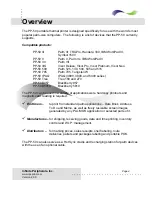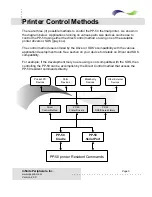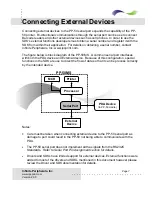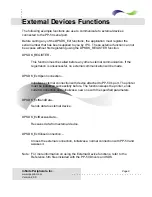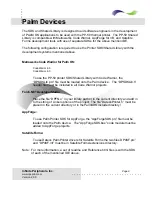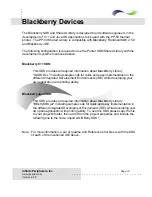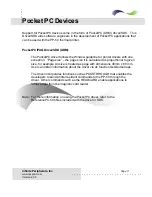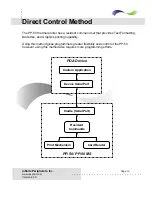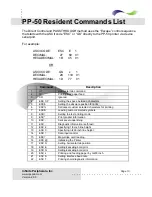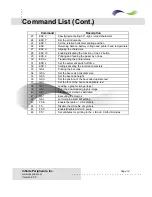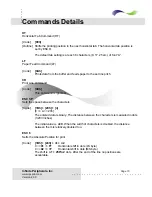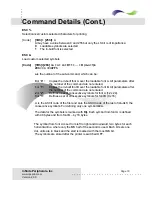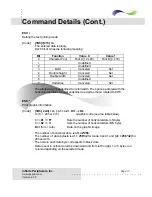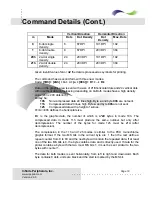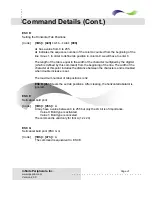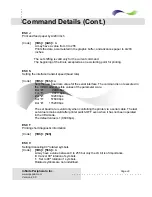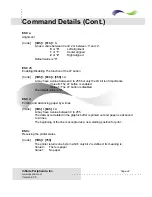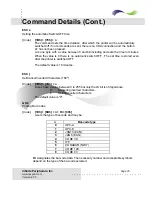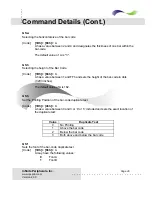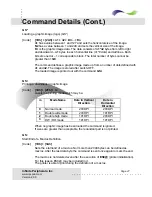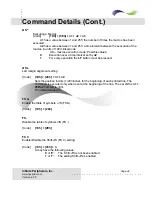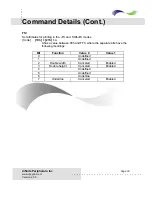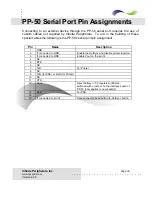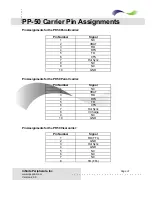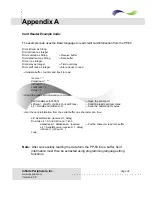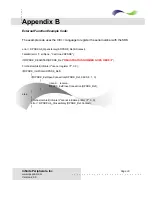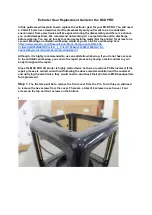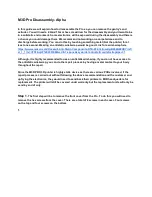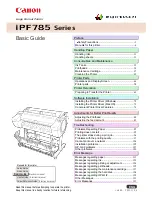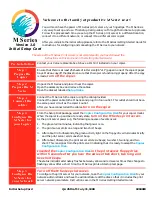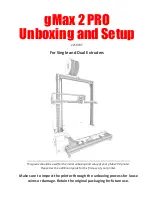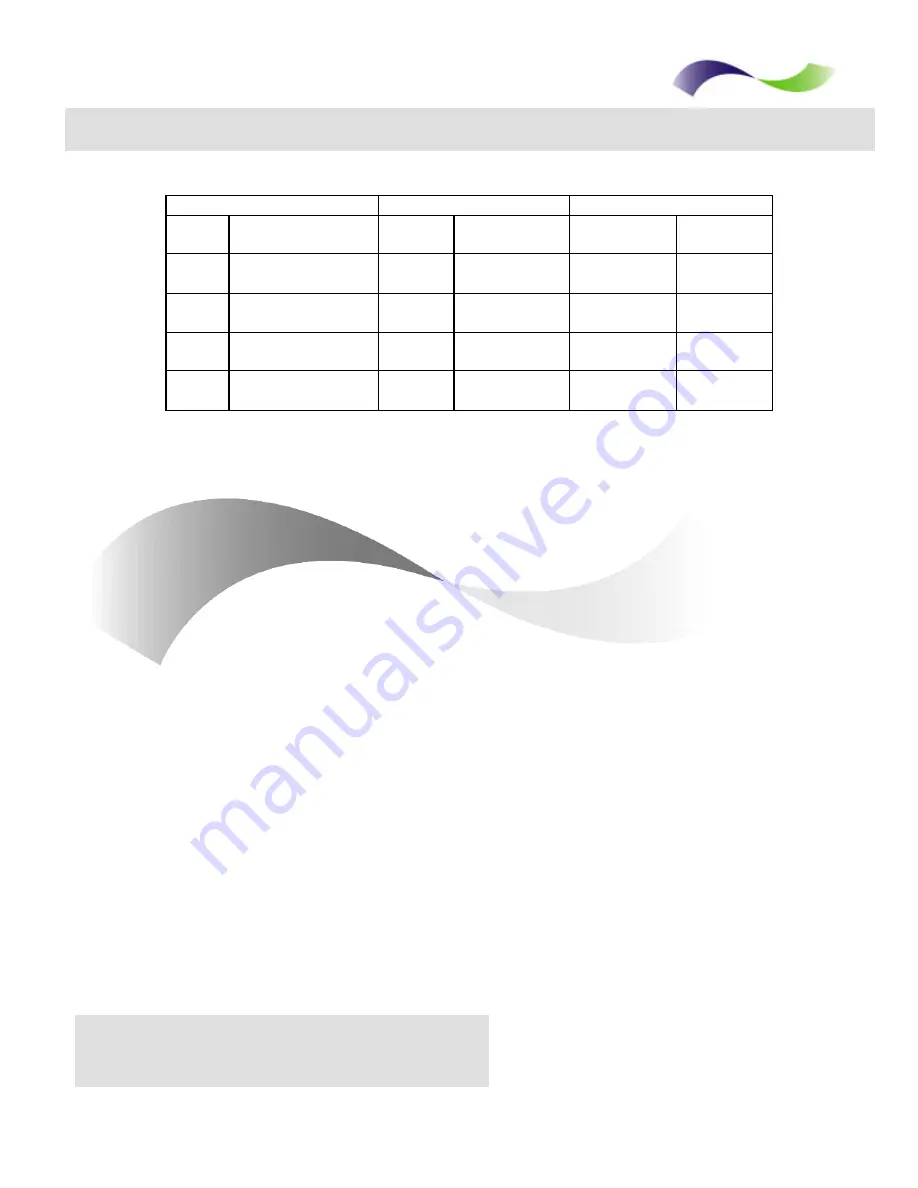
. . . . . . . . . . . . . . . . . . . . . . . . . . . .
..
..
..
..
.
Infinite Peripherals, Inc.
Page 18
www.ipcprint.com
Version 2.00
Command Details (Cont.)
Vertical Direction
Horizontal Direction
m
Mode
Dots
Dot Density
Dot
Density
Max. Dots
0
8-dot single
density
8
67 DPI
101 DPI
192
1
8-dot double
density
8
67 DPI
203 DPI
384
20h
24-dot single
density
24
203 DPI
101 DPI
192
21h
24-dot double
density
24
203 DPI
203 DPI
384
Given invalid value of
m
or
n2
the data is processed as symbols for printing.
The command has a second form with three new modes:
Code:
[1Bh] + [2Ah] + m + n + {a + [00h]} + D1 +…+ Dk
Data on the graphic area is sent with a size of
n*8
horizontal dots and 24 vertical dots
with or without data compressing depending on
m
. Both modes have a high density
value (203 x 203 dots/inch).
m
may be:
10h
Non-compressed data 24 lines high. Byte
a
and byte
00h
are not sent.
11h
Compressed data 24 lines high. Byte
a
and byte
00h
are not sent.
12h
Compressed data with a height of
a
lines.
0<=
n
<=40h defines the horizontal size.
Di
is the graphic data, the number of which is
n*24
bytes in mode 10h. The
compressed data in mode 11h must produce the same number but only after
decompression. The number of the bytes for mode 12h must be
a*n
(after
decompression).
The compression in the 11h and 12h modes is similar to the PCX monochrome
graphic format. If the two MS bits in the current byte are 1 then the rest define a
repeat counter from 0 to 63 and the next byte will contain the repeated data. If at least
one of the two MS bits is 0, the byte contains data and is directly used. If data for the
printer contains a byte with the two most MS bits 1, it must be sent similar to the two
bytes with counter 1.
The data for both modes is sent horizontally, from left to right and downward. Each
byte contains 8 dots, units are black and the start is marked by the MS bit.

